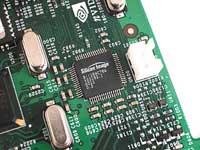New silicon purification alternative
Chip manufacturing technology could take a step forward shortly, as some Japanese chemicals have improved their silicon purification method. Silicon is a basic component of integrated circuits, so the new method can have a huge economic impact on the chip industry.

Silicon is extracted from silica, which is found in sand, that is, it is a very abundant element in nature. However, the extraction of silicon from the sand requires very high temperatures, which increases the process.
Following the usual methodology, the silica must first be melted, heating it to about 1,700 °C. On the contrary, the Japanese method of chemicals consists in immersing solid silica in liquid calcium chloride, after which the liquefaction of this salt is proceeded, for which a temperature of about 850ºC is sufficient. From there, the conventional electrolytic process consists of removing silica oxide ions from a metal electrode by applying a suitable current, leaving pure silicon.
Purified silicon is usually fragile, so for now the method is not suitable to "renew" oxidized chips, but scientists have proposed many other applications.





